Travelogues: NYCEP students on the go in 2015
NYCEP students often spend their summers in the field, in museums, working with new colleagues, or learning new techniques. Here are a few student experiences from summer 2015.
Kelsey Pugh
Kelsey is a PhD candidate at the CUNY Graduate Center studying relationships among fossil apes, and locomotor evolution within the ape and human group.
This past summer I did fieldwork in Northern Hungary at a site run by Dr. David Begun of the University of Toronto. This fossiliferous area is well known among anthropologists because several fossil primates have been found here, including Rudapithecus, a fossil ape, and Anapithecus, a pliopithecoid. It was a productive field season, and although I didn't personally find any primate fossils, I did excavate a beautifully preserved suid (pig) mandible.
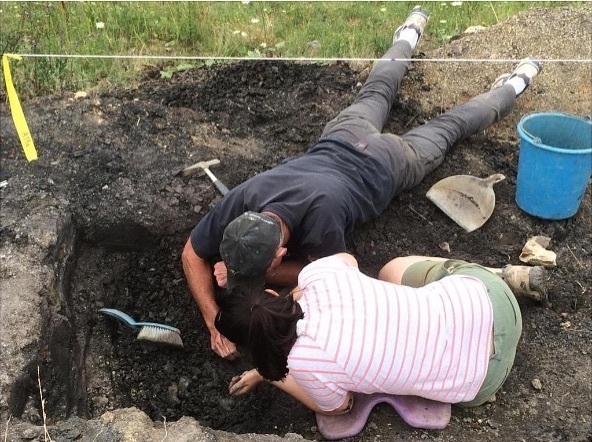
Dr. Jay Kelley and Kelsey Pugh excavating a suid mandible (Photo Credit: D. Shapiro)
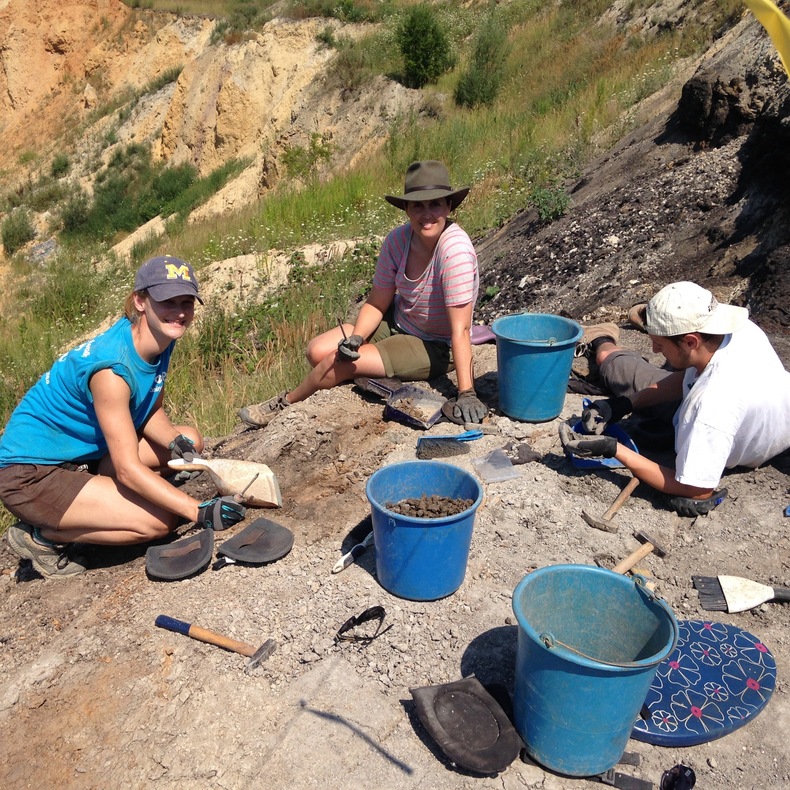
Darcy Shapiro, Kelsey Pugh, and a field school student looking for fossils (Photo credit: A. Beresheim)
Jen Tinsman
Jen is a PhD candidate at Columbia University studying the landscape genomics of endangered lemurs.

I study the genetics of a species of critically endangered lemur, the blue eyedblack lemur, and its sister species, the black lemur (pictured). I'm looking to see how the critically endangered species adapted to its hotter and drier ecological niche, and whether it has the adaptive capacity to respond to ongoing climate change. I spent four months in northwestern Madagascar last summer collecting noninvasive samples from throughout both species ranges.
Sandra Winters
Sandra is a PhD candidate at New York University studying the role of face patterns in the maintenance of reproductive isolation in guenons.
I traveled to CERCOPAN primate sanctuary in Calabar, Nigeria. I conducted preliminary experiments with the guenons at the sanctuary in preparation for my dissertation research, which focuses on the role of guenon face patterns in the maintenance of reproductive isolation. I also photographed the guenons at CERCOPAN for morphological analyses and collected hair, blood, and microbiome samples from all primates at the sanctuary (guenons and mangabeys), for use in a variety of other research projects.
Photographing monkeys.
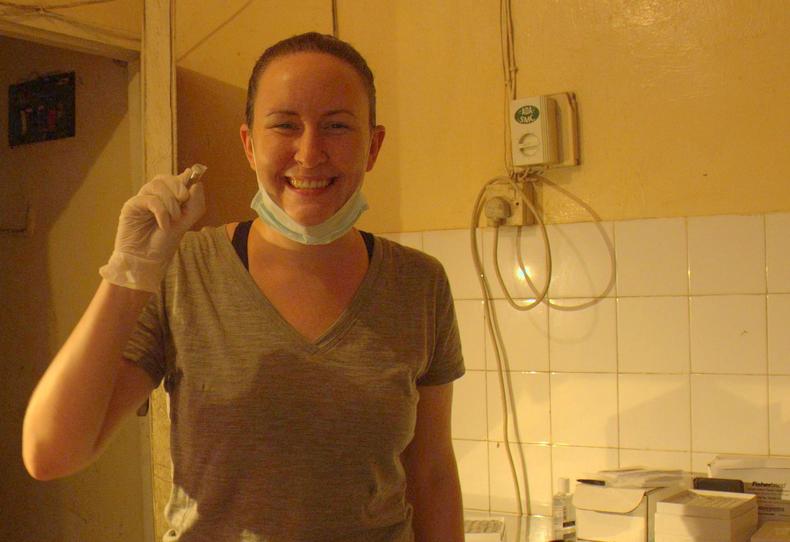
My 1000th hair sample!
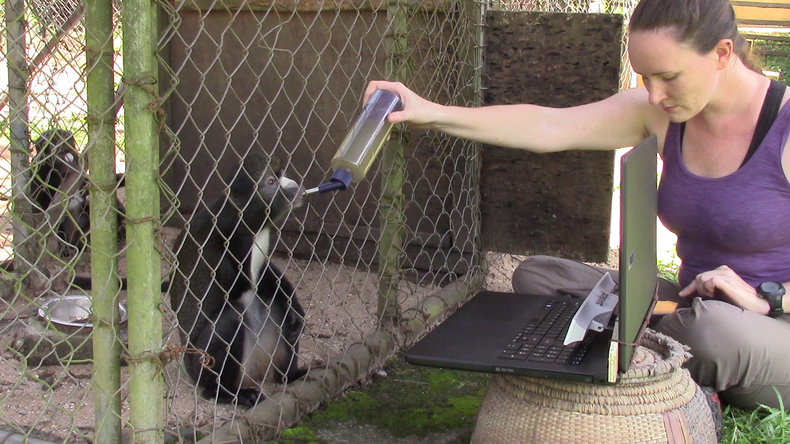
Working on experimental methods.
Holly Fuong
Holly is a 1st year PhD student at Columbia interested in how animals respond to risk based on their social and natural environments.

In August 2015 I had the amazing opportunity to visit Kakamega Forest in western Kenya, the site of my advisor's (Dr. Marina Cords) longterm research on blue monkeys. I visited Kakamega to familiarize myself with the biology and interactions among vertebrate species in the ecosystem, in hopes of getting some early inspiration for my PhD project. Maressa, Nic, several field managers/assistants, and I also led an activity on population ecology at a local school.
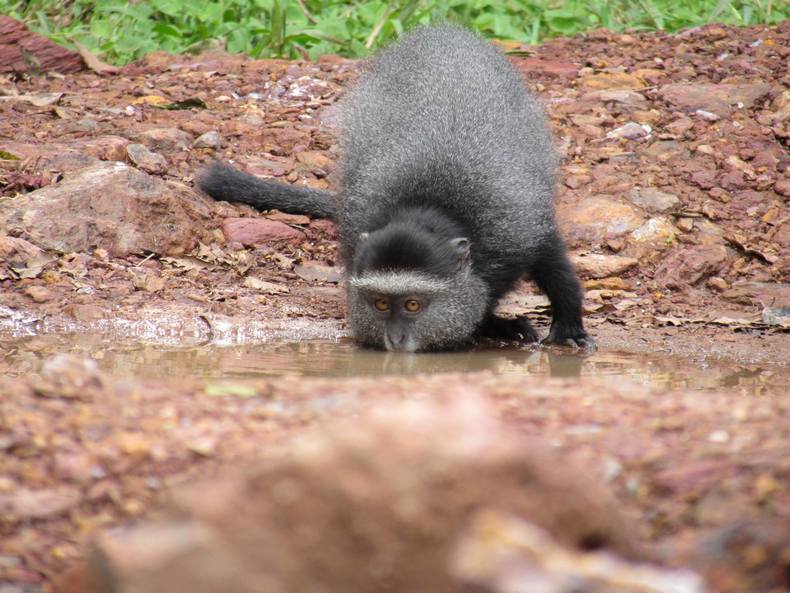
Megan Petersdorf
Megan is a 3rd year PhD student at New York University studying the evolution of reproductive strategies in primates.

I spent June through August 2015 in Zambia at Kasanka National Park undertaking pilot research for my PhD dissertation on Kinda baboons. I spent the summer learning about the baboons and testing the feasibility of my field methodology, which includes photography, audio recording, behavioral data collection, and noninvasive fecal and urine collection.
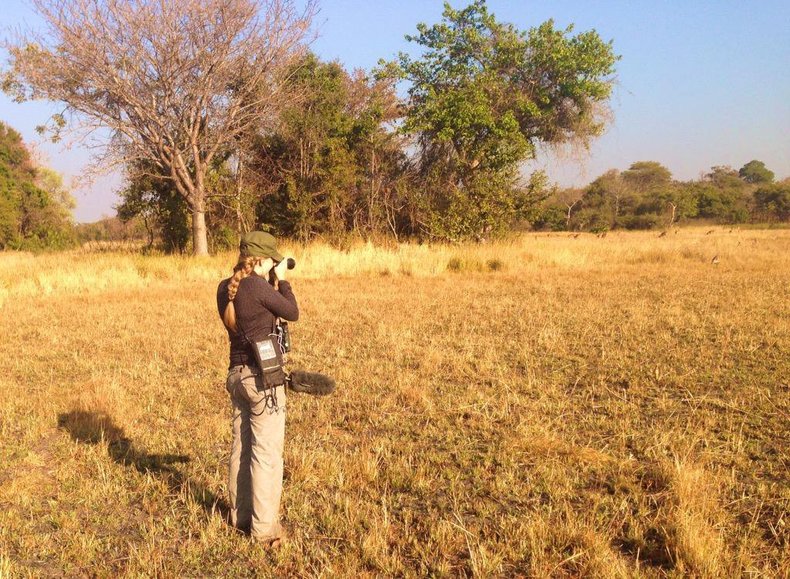
Multitasking in the field.

My first baboon urine sample!
Jennifer Eyre
Jenny is a PhD candidate at New York University who is interested in the evolution of the modern human pelvis and mechanism of birth.
In May of 2015 I traveled to South Africa with fellow NYU student Cody Prang and our advisor, Dr. Scott Williams. We collected data on fossil hominins in the collections of the University of the Witswatersrand ("Wits") and the Ditsong Museum of Natural History. We were also able to find time to visit several fossil hominin sites, including Sterkfontein, Malapa, as well as the Rising Star cave system, where the new species Homo naledi was recently discovered. We were lucky in having Dr. Marina Elliott, one of the scientists responsible for excavating the material at Rising Star, to give us a tour.
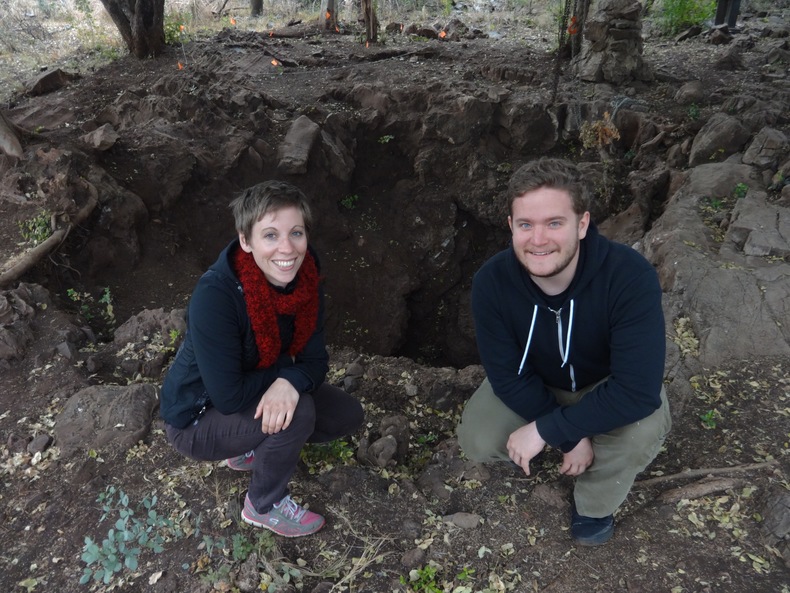
Cody and Jenny at the Malapa hominin site where the species Australopithecus sediba was discovered in 2008.
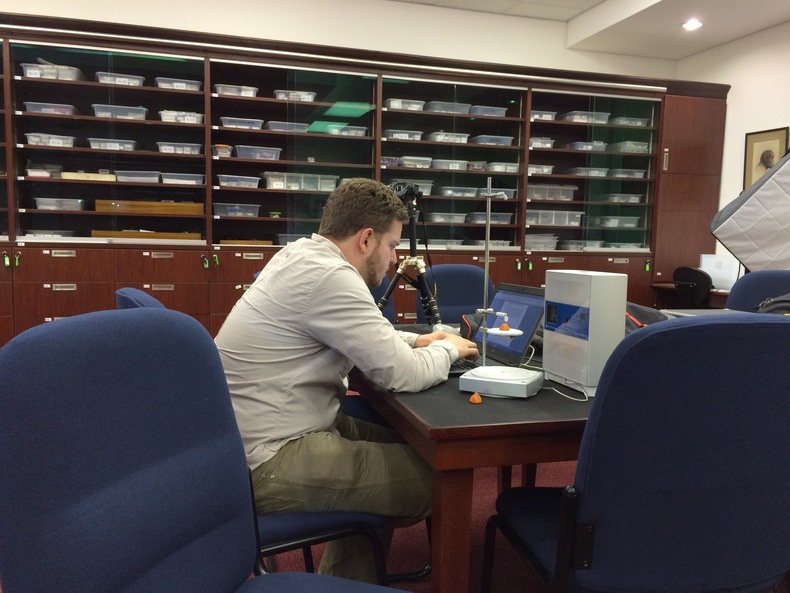
Cody hard at work in the vault at Wits.
Kristen Ramirez
Kristen is a 3rd year PhD student at CUNY Graduate Center studying the evolution of locomotion, specifically the hand and arboreality in hominoids.

As a 3rd year preparing a dissertation proposal for a biomechanics heavy project I figured it would be best to learn biomechanics first. Transmitting science offers many great short courses relevant to evolutionary biologists. During the January 2016 session held in Sabadell, Spain, just outside of Barcelona, I enjoyed the coffeefueled marathon of lectures and activities led by experts in mechanics, functional anatomy, evolution, and bone biology just as much as conversations with
classmates who study the spectrum of vertebrates from dinosaurs to cetaceans over fresh olives and serrano ham. We did spend the better part of our days learning, discussing, and practicing new software, and walks through Catalonian streets were the perfect backdrop to contemplate what we learned in class.

Natalie O’Shea
Natalie is a 2nd year CUNY Graduate Center student studying craniofacial growth and development.
I spent summer 2015 excavating the skeletal remains of mountain gorillas in the Virunga mountains. See my previous post for more about my fieldwork!
Alex DeCasien
Alex is a 2nd year PhD student at New York University studying the evolution of primate brain size and sex differences in neuroanatomy and cognition
Last summer, I had the opportunity to spend two months in San Juan, Puerto Rico. I took 3D scans and linear measurements of the rhesus macaque skeletal collection housed at the Laboratory of Primate Morphology & Genetics at the University of Puerto Rico. This work will ultimately improve our understanding of intra-specific variation in sexual dimorphic traits, including body size, canine size, and muscle strength. And when I wasn't hanging out with monkey skeletons in the lab, I made sure to enjoy some beautiful beaches and delicious frozen beverages.
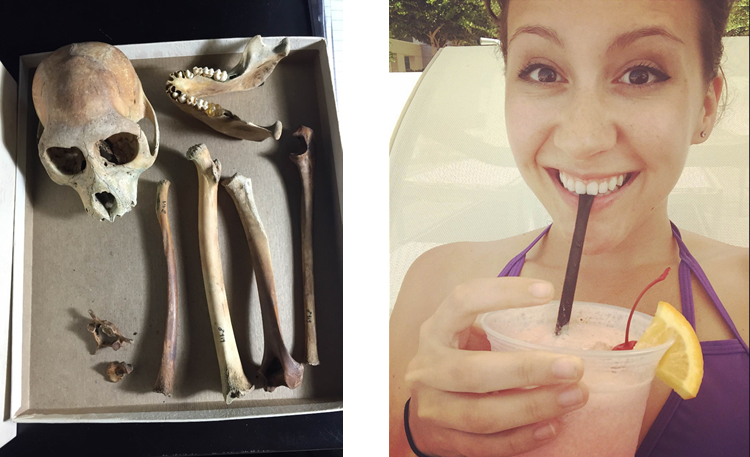
Susie Lee
Susie is a 3rd year PhD student at New York University interested in patterns of mother-infant relationships in non-human primates.
Last summer I visited Cayo Santiago to develop and test an ethogram for studying individual difference in maternal behaviors. Rhesus macaque females vary in terms of how much they pay attention to others’ infants, and how much they are motivated to handle those infants. Now I am working to develop a project to better study the behavioral and physiological variation surrounding infant handling interactions in rhesus macaques. I hope to bring more insight next time!
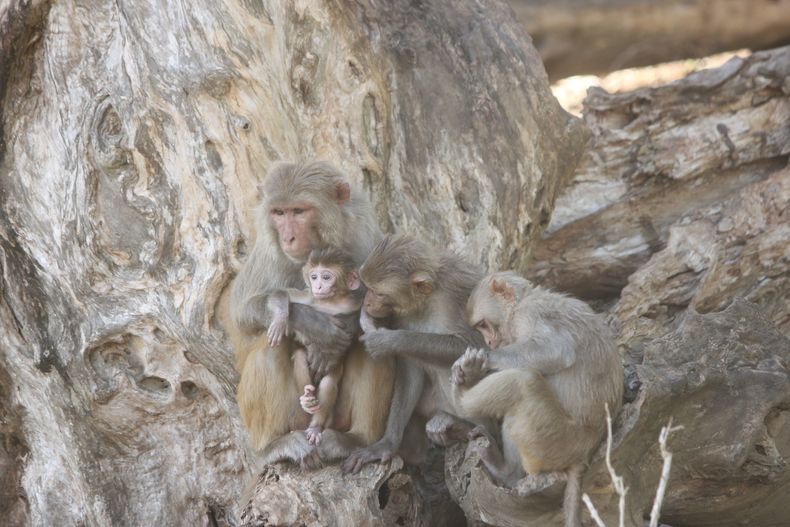
News, notes, and information from NYCEP students, alumni, and faculty



